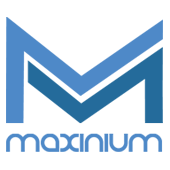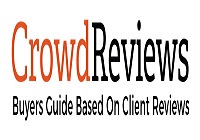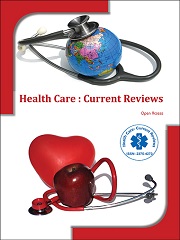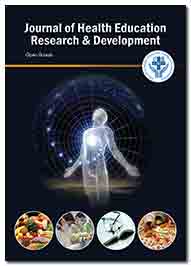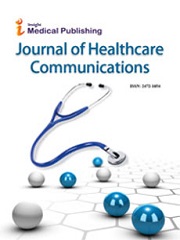Theme: Technology and medical science hand in hand for better healthcare
Healthcare IT 2019
- About Healthcare IT 2019
- Meeting Objective
- Why Healthcare IT 2019
- Core Audience
- Sessions on Healthcare IT 2019
- Market Analysis
-
Fostering collaboration and networking to support members’ work to improve people’s lives.
-
Expanding members’ leadership opportunities within the association and in the field.
-
World-class platform to Exhibit your products, services, innovations & Ideas
-
Special Workshop/ Symposium, B2B, and interactive sessions, with industry Sponsors and Exhibitors.
-
One to one interaction with eminent scientists, Industry Leaders, Researchers
-
Well organizing the program with 5+ hours of networking sessions
-
Interactive panel discussions and Q&A sessions
-
Lively Exhibition area filled with the leading industry solution providers
-
Chief Marketing and technology officers of Healthcare IT Product & Service providers
-
Chief Information Officers
-
Chief of Medical Records
-
Marketing & Communications Directors
-
CRM Managers and Data Analysts
-
IT Directors and senior IT and IT security professionals
-
Information Systems Directors/Managers
-
Medical/Clinical Informatics Directors/Managers
-
Web Directors, Webmasters and Web Team Members
-
Public Relations Directors
-
Business Development Executives
-
Physician Relations Directors
-
Strategic Planners
-
mHealth/ Remote – Monitoring/ Wireless
-
Telemedicine
-
HIS/CIS/EMR/PACS
-
Data Centers
-
Mobile Apps
-
Decision makers in Healthcare IT
-
Physicians, nurses, dentists, pharmacists, and other clinicians
-
Researchers and educators
-
Biomedical and health science librarians
-
Advanced students pursuing a career in informatics
-
Scientists and developers
-
Government officials and policymakers
-
Consultants and industry professionals
-
Policy Makers
-
Health care policy developers Medical Insurance & Medical Tourism Companies
-
Medical Equipment/healthcare service or product Manufacturers
-
Healthcare Start-Ups and Venture Capitalists
-
Pharm & Biopharma Companies
-
Medical Associations
-
Medical Colleges and Institutions
e-Health is an expensive term and refers to the use of information and communications technologies in healthcare. There are various models and frameworks for designing e-Health technologies. Many of these models are expert-oriented or come from software engineering. However, participation of stakeholders is important for sustainable eHealth technologies. This means that stakeholders (payers, caregivers, patients) are involved during the design process to determine the added values ​​(clinical, behavior, care organization) and to test whether the technology in the making meets these requirements. e-Health offers timely coverage and innovative options for managing patient care, electronic records, and medical billing.
- E-consult
- Teleradiology
- Telediagnose
- Teleconsultatie
- Telecoaching
- Telemonitorting
- Delivers Medical Treatment by Storing, Managing and Transferring Medical Records
- Online Pieces of training makes the Health Programs much Better
- E- healh apps
- M-health
- Electronic health record(HER) and EMR (Electronic Medical Reords)
- Radiology information system
- Pharmacy Information system
- Patients Portals
Translational Bioinformatics (TBI)
Focus on the convergence of molecular bioinformatics, biostatistics, statistical genetics and clinical informatics. Its focus is on applying informatics methodology to the increasing amount of biomedical and genomic data to formulate knowledge and medical tools, which can be utilized by scientists, clinicians, and patients. The computer-based information is uses in biomedical research to improve human health.
TBI is a relatively young discipline that spans a wide spectrum from big data to diagnostics and therapeutics. TBI involves applying novel methods to the storage, analysis, and interpretation of a massive volume of ‘omics data and it bridges the gap between bench research and real-world application to human health.
Current trends in research on the basis of translational bioinformatics (but not limited to):
- Precision Medicine and biomedical discovery
- Next Generation sequencing for personal Genomics. Cancer genomics and Metagenomics
- Epigenomics, Genome-phenome-envirome associates
- Biomedical text /Data mining/ Data integration
- Network biology/ medicine and pathway/ regulation analysis
- For drug discovery and development
It is a rapidly growing sub –discipline with in biomedical informatics. It focuses on developing new informatics theories, tools, and solutions to accelerate the full translational continuum basic research, clinical trials, and medical centers and community practice.
The conceptual framework for CRI is organized around three conceptual components: workflows; data sources and platforms; and informatics core methods and topics. Mainly research focuses on biomedical data and knowledge, clinical and translational workforce. The goal of CRI is (but limited to):
- Improve research workflow
- Interdisciplinary team science
- Learning healthcare system
- Share big health data
- Computational biology
- Application of IT in Medical Reasearch
Health Information Technology in Rural Healthcare
HIT implements and maintains, rural facilities and providers with technology expertise. HIT is used to store, secure, retrieve, and transfer information through Electronic Health Records. Paperwork is reduced by e-prescriptions. It helps in securing electronic networks to deliver up-to-date records of a patient. According to health research and quality consistent and broad utilization of HIT will:
- Prevent medical errors and increase health care accuracy and procedural correctness
- Reduce health care costs and expand access to affordable care.
- Increase administrative efficiencies and healthcare work processes.
- Decrease paperwork and unproductive or idle work time
- Extend real-time communications of health informatics among health care professionals
Health Information technology to improve consumer/ public healthcare system
Public health informatics is a critical component of new models of care, designed to promote health, wellness, shared decision-making and consumer engagement. HIT is Information Technology connected to healthcare and human services. It underpins healthcare data administration crosswise over modernized frameworks and the protected trade of wellbeing data between customers, suppliers, payers, and quality screens. Enhance medicinal services quality or adequacy: Increment medicinal services profitability or productivity; Anticipate restorative mistakes and increment human services precision and procedural rightness; Decrease human services costs; Increment managerial efficiencies and human services work forms; Decline printed material and ineffective or sits out of gear work time; Expand on-going interchanges of healthcare informatics among human services experts; and Extend access to reasonable care.
- Recent Healthcare IT solutions to facilitate population health management and patient care delivery
- Evidence-based outcomes on Healthcare IT in improving healthcare quality and outcomes
- Role of Health IT systems in enabling access to patient’s health status and history
- Learning health systems (LHS) for patient care improvement
Remote Patient Monitoring (RPM)
Remote Patient Monitoring (RPM) is a type of ambulatory healthcare that allows a patient to use a mobile medical device to perform a routine test and send the test data to a healthcare professional in real-time. RPM technology includes daily monitoring devices such as glucose meters for patients with diabetes. RPM is frequently used with the elderly and the chronically ill, two groups of people who have high levels of medical need. Remote monitoring techniques allow these patients and their physicians to closely monitor medical conditions.
Consolidating RPM in interminable ailment administration can essentially enhance a person's personal satisfaction. RPM encourages these objectives by conveying care ideal to the home. What're more, patients and their relatives feel comfort realizing that they are being observed and will be upheld if an issue emerges? This is especially vital when patients are overseeing complex self-mind procedures, for example, home haemodialysis. Scratch highlights of RPM, similar to remote checking and pattern investigation of physiological parameters.
The time spared because of RPM usage builds effectiveness, and enables medicinal services suppliers to allot more opportunity to remotely instruct and speak with patients.
- Collecting and Transferring of Medical Records by Healthcare Provider.
- Applications of Artificial Intelligence in Healthcare.
- Maintains Diabetes by providing real-time delivery of blood pressure & blood glucose level
- Cardiac Re-synchronization therapy minimizes the Risk of Heart Failures.
- Diagnostic application software that develops treatment recommendations and intervention alerts based on the analysis of collected data.
Telemedicine is the practice of medicine using technology to deliver care at a distance. A physician uses telecommunications technology for diagnosis, treatment, and prevention of diseases and injuries. All of the healthcare services are provided to patients remotely via video, smartphones, email, etc. Telemedicine aids in the management of chronic conditions, medication management, follow-up visits, and video consultations with specialists. The aim of telemedicine is to make health management easier for patients and to improve the efficiency of healthcare delivery. A greater effort is being made to:
- Expand access to care: remote hospitals can provide emergency and intensive care services.
- Improve health outcomes: pateints can receive early diagnosis, reduce hospitalisxation as well as reduced mortality rates.
- Address shortages and mis-distribution of healthcare providers: Specialists can serve more patients via tele health technologies.
- Support healthcare education programs: rural physicians can consult with specialists more easily.
- Support patients and their families
- Virtual Hospitals
Information & communication technology in Healthcare
ICT encompasses both the internet-enabled sphere as well as the mobile one powered by wireless networks. In modern society ICT is ever-present, with over three billion people having access to the Internet. With approximately 8 out of 10 Internet users owning a smartphone, information and data are increasing by leaps and bounds. This rapid growth, especially in developing countries, has led ICT to become a keystone of everyday life. Fast progressions in ICT in the most recent decade or so give answers for the issues in social insurance administration frameworks. These incorporate a wide range of issues, for example, tolerant security, dietary administration, telemedicine, advanced imaging, report administration and so on. This paper investigates the developing advancements which are being utilized for the change of the social insurance process and distinguish the issues and their likely arrangements particularly with regards to creating nations. Telemedicine offers a method for enhancing the standard of medicinal services particularly in the creating scene.
These may help social insurance experts and group healthcare laborers to do their work better especially in remote areas.
- Plays Major Role in Health Research.
- Manages and Stores Health-Related Data through Electronic Medical Record.
- Educates people Regarding Awareness of Communicable Diseases
Electronic prescribing is a technology framework that allows physicians and other medical practitioners to write and send prescriptions to a participating pharmacy electronically instead of using handwritten or faxed notes or calling in prescriptions. It gives physicians full visibility into all of a patient’s documented allergies and previously prescribed drugs and will trigger clinical alerts if a newly prescribed drug has any potential for negative reactions. Alerts in the system will notify the prescriber of allergies, interactions with other drugs the patient is taking, duplicate therapy, as well as paediatric, pregnancy and geriatric issues that would preclude a patient from taking a particular drug. E-prescription can spare your cash, time, and help guard you. Prescribers can check which medicates your protection covers and endorse a medication that costs you less.
Electronic prescription is simpler for the drug specialist to peruse than manually written medicines. This implies less possibility you'll misunderstand the medication or dosage. Prescribers will have secure access to your medical history, so they can be alarmed to conceivable medication collaborations, hypersensitivities, and different notices.
- Drug Errors can be Prevented through prescription
- Medication Reconciliation Process is Speed-en up
- Loss of Prescriptions can be Minimized
- Computerized provider( physician) order entry
- Clinical point of care technology
Healthcare Informatics and Innovations
Healthcare informatics is the interdisciplinary study of the design, development, adoption and application of IT- based innovations in healthcare services, management and planning and applying medical concepts in conjunction with health information technology systems to help clinicians provide better healthcare.
Clinical and business intelligence (C&BI) is the aggregation, analysis, and use of clinical, financial, operational, and non-traditional data captured inside and out of the healthcare setting to directly inform decision-making. It has the power to positively impact patient care delivery, health outcomes, and business operations.
Health Business solution: area identifies and promotes the use of health IT for efficient, cost-effective execution of financial and administrative functions within healthcare.
Imaging informatics picture archiving and communication system, medical imaging
Health innovations focus on innovative care concepts, eHealth, medical technology, Digital Health, and Health Services. The market is central to our approach. How can companies contribute to the improvement of care processes: prevention, diagnosis, treatment and monitoring. In past few years many Different devices are created which took less time and increased the efficiency of the work and many more innovations are about to take place in future.
Biostatistics and Data Management unit provides scientists with complete consultancy services on statistics and data management for their research projects. Configuration and tuning of open source software to meet special data analysis or study design needs. Database design and development of web interface applications or extensions to manage data. Questionnaire review and study implementation in selected software tool. Performing statistical analyses of clinical and biomedical databases. Assistance in statistical analyses performed by researchers.
AI in healthcare is the use of algorithms and software to approximate human cognition in the analysis of complex medical data. The primary aim of health-related AI applications is to analyse relationships between prevention or treatment techniques and patient outcomes. AI programs have been developed and applied to practices such as diagnosis processes, treatment protocol development, drug development, personalized medicine, and patient monitoring and care. Health companies merging with other health companies, allow for greater health data accessibility. A large part of industry focus of implementation of AI in the healthcare sector is in the clinical decision support system. Examples of large companies that have contributed to AI algorithms for use in healthcare are: IBM, Microsoft, Intel etc.
Block Chain in healthcare: Block chain and distributed ledger technology (DLT) have great potential across healthcare to improve patient care and reduce costs. These emerging technologies have already started to take hold in healthcare networks, from clearinghouses to drug supply chains to provider-credentialing processes and other critical areas.
Digital therapeutics defined as a treatment or therapy that utilizes digital and often Internet-based health technologies to spur changes in patient behaviour. Digital therapeutics can be used as a standalone therapy or in conjunction with more conventional treatments. Digital therapeutics can be used for a variety of conditions such as including type II diabetes, Alzheimer's disease, dementia, congestive heart failure. Digital therapeutics can also be used to treat patients with psychological and neurological symptoms.
In recent years, huge amounts of structured, unstructured, and semi-structured data have been generated by various institutions around the world and, collectively, this heterogeneous data is referred to as big data. The growth of the big data analytics in the healthcare market is driven by factors such as increase in adoption of big data in the healthcare industry, surge in demand for analytics solution to aid population health management, and shift in preference from a pay-for-service model to a value-based care model. Allied Market Research recently published a report, titled, "Big Data Analytics in Healthcare Market. According the report, the global big data in healthcare market was valued at $16.87 billion in 2017 and is expected to attain $67.82 billion by 2025, registering a CAGR of 19.1% during the forecast period. Big data application in healthcare but not limited to: Real-Time alerting, Health data for informed Strategic Planning, Integrate medical imaging for an broader diagnosis, patient health tracking.
Health IT Policy and Marketing
There are many categories of health policies, including global health policy, public health policy, mental health policy, health care services policy, insurance policy, personal healthcare policy, pharmaceutical policy, and policies related to public health such as vaccination policy, tobacco control policy or breastfeeding promotion policy. Medical research can be both the basis for defining evidence-based health policy, and the subject of health policy itself, particularly in terms of its sources of funding. Those in favor of government policies for publicly funded medical research posit that removing profit as a motive will increase the rate of medical innovation. Main Health Information technology policy( but not limited to ) :
Health Information Technology for Economic and Clinical Health Act (HITECH)
Health Insurance Portability and Accountability Act (HIPAA)
Health IT Certification Program
HIPAA security reules
E-prescribing for controlled substances: Drug Enforcement Agency (DEA)
Imaging informatics, also sometimes referred to as radiology informatics or medical imaging informatics, concerns how medical images are used and exchanged throughout complex healthcare systems. However, with the proliferation of digitized images across the practice of medicine to include fields such as cardiology, ophthalmology, dermatology, surgery, gastroenterology, obstetrics, gynaecology and pathology, the advances in Imaging Informatics are also being tested and applied in other areas of medicine. Various industry players and vendors involved with medical imaging, along with IT experts and other biomedical informatics professionals, are contributing and getting involved in this expanding field.
Key areas relevant to medical Imaging includes:
- Picture archiving and communication system (PACS) and component systems
- Imaging informatics for the enterprise
- Image-enabled electronic medical records
- Radiology Information Systems (RIS) and Hospital Information Systems (HIS)
- Digital image acquisition
- Image processing and enhancement
- Image data compression
- 3D visualization and multimedia
- Speech recognition
- Computer-aided diagnosis (CAD).
- Imaging facilities design
- Imaging vocabularies and ontologies
- Data mining from medical images databases
- Transforming the Radiological Interpretation Process (TRIP)
A wave of digitization has taken over the world. All the emerging technologies like Artificial Intelligence and others are helping people live a better and easier life. The trends emerging in the healthcare and diagnostics ecosystem as a result of digitization are :
Value based healthcare
New product development
Care Management Software
Sleep Tech
As a result of this boom in information technology, consumers have not only become more involved in monitoring their own health, but are well-positioned to directly engage with those who provide their healthcare.
The role of Nursing Education is to develop the nursing profession by the combination of theoretical learning and practical training programs provided to them the platform to prepare them for their duties as nursing professionals. Nursing Education provided to nursing students helps them in becoming well adaptable to their work by medical and nursing professionals who are qualified for educational tasks. Many countries offer Nursing Education courses so that they can become as a general nursing practitioner or specialized in areas like psychiatric nursing, paediatric nursing, cardiac nursing and operatory nursing.
- Nursing Informatics
- Nursing Courses
- Nursing Science and Awareness
- Nurse Practitioner Education
- Advances in Nursing Training
- Case Studies in Nursing
- Digital Nursing Updates
Nursing research is evidence used to support day to day nursing practices as it is an evidence based area of practice. Nursing education focuses on the use of research in nursing field to get new inventions. Nursing researches based on two approaches such as Quantitative research and Qualitative research. Nursing research methods are most commonly used for getting better efficiency and time management in health care system.
- Improvement of Clinical Research
- Prevention or Delaying of Onset of Disease
- Finding Effective Approaches to Achieve Optimal Health
- Understanding the Symptoms of Illness
Nursing main target is to care and working collaboratively with, the patient and their family members and other team members, and also with physicians, therapists whose main focus is on treating illness to improve standards of life. Different types of nursing are: Registered nurse (RN), Licensed practical nurse (LPN), Travel nurse, Nurse practitioner (NP), Intensive care unit (ICU) registered nurse, Medical-surgical nurse, Emergency room nurse, Operating room (OR) nurse, Home health nurse, Post-anaesthesia care unit (PACU) nurse. Nursing is one of the essential areas of medicinal services, concentrated on caring people, families, and groups so they may accomplish, keep up, or recoup ideal wellbeing and personal satisfaction. Medical attendants might be separated from other medicinal services suppliers on their way to deal with understanding consideration, preparing, and extent of training. Medical caretakers home in numerous claims to fame with varying levels of remedy expert. In the after-war time frame, nurture instruction has experienced a procedure of enhancement towards cutting edge and concentrated qualifications, and huge numbers of the conventional controls and supplier parts are evolving.
Conference Highlights
- e-Health
- Translational Bioinformatics (TBI)
- Clinical Research informatics
- Health Information Technology in Rural Healthcare
- Health Information technology to improve consumer/ public healthcare system
- Remote Patient Monitoring (RPM)
- Telemedicine
- Information & communication technology in Healthcare
- e- Prescription
- Healthcare Informatics and Innovations
- Biostatics, Data management
- Artificial Intelligence
- Big data analytics
- Health IT Policy and Marketing
- Imaging informatics
- Digital Healthcare Technology
- Nursing Education
- Nursing Research
- Types of Nursing
To share your views and research, please click here to register for the Conference.
To Collaborate Scientific Professionals around the World
| Conference Date | November 25-26, 2019 | ||
| Sponsors & Exhibitors |
|
||
| Speaker Opportunity Closed | Day 1 | ||
| Poster Opportunity Closed | Click Here to View | ||
Useful Links
Special Issues
All accepted abstracts will be published in respective Our International Journals.
- Health Care : Current Reviews
- Journal of Health Education Research & Development
- Journal of Healthcare Communications
Abstracts will be provided with Digital Object Identifier by














































